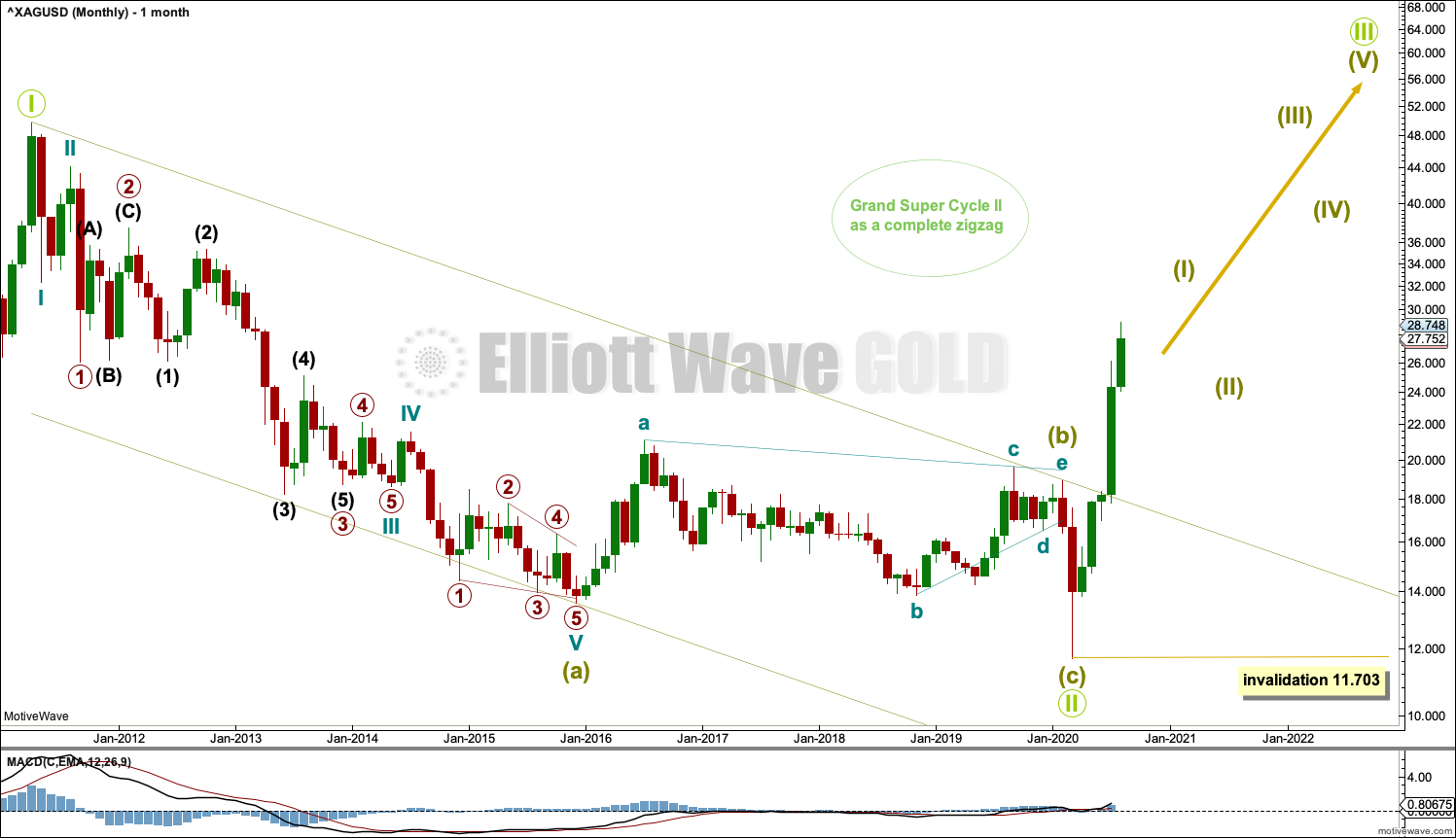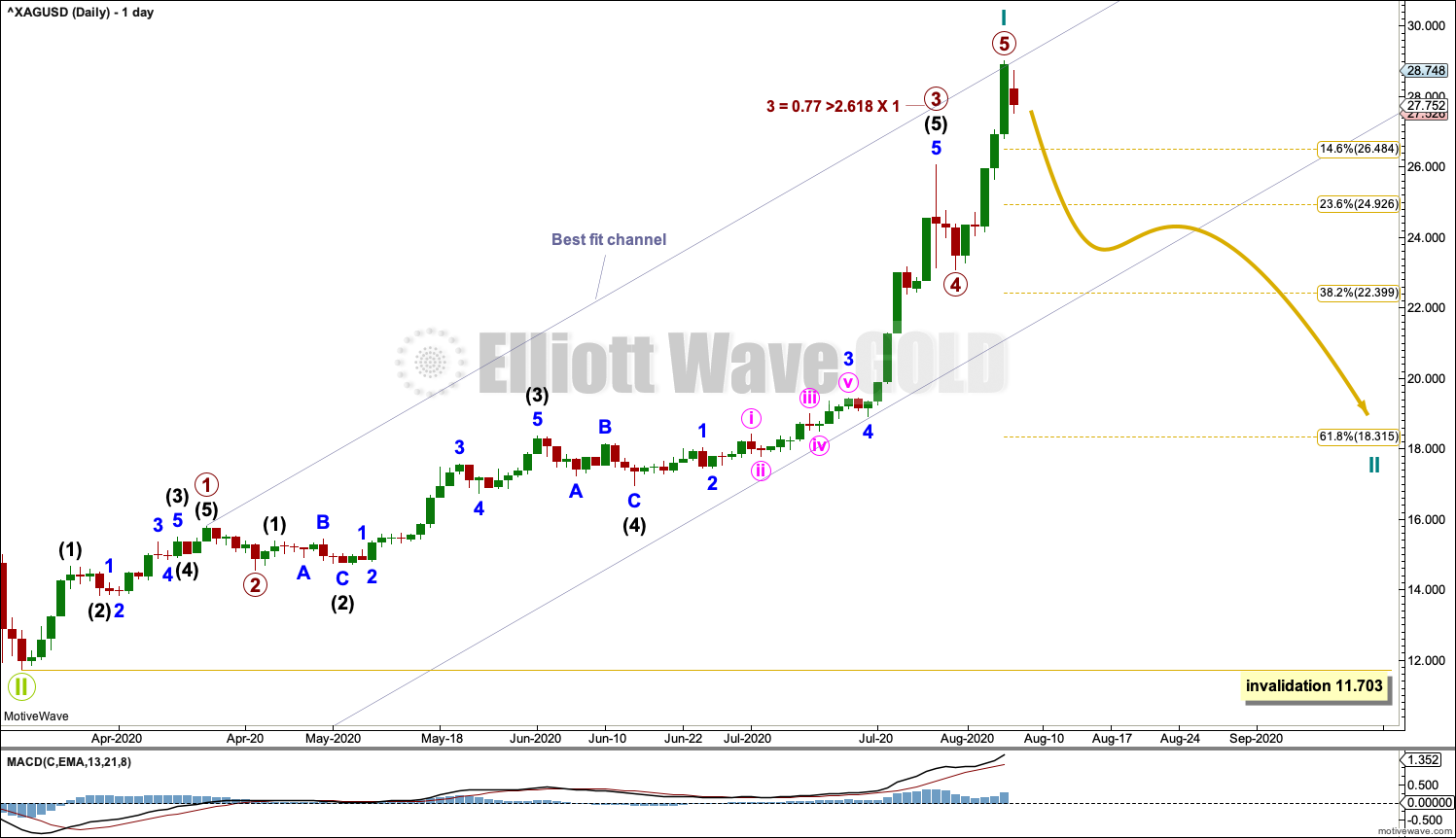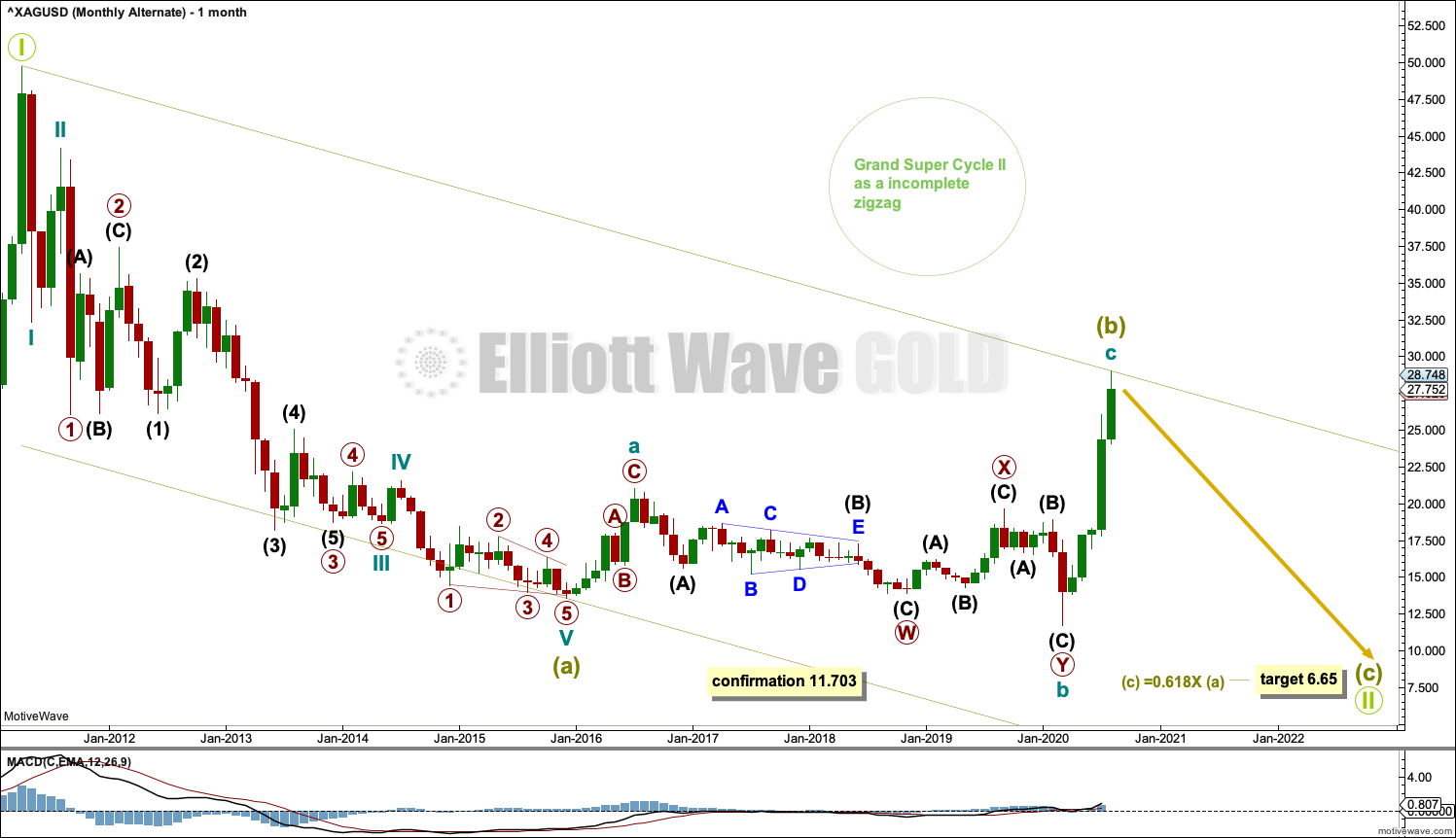SILVER: Elliott Wave and Technical Analysis | Charts – August 7, 2020
Summary: A sustainable high may be in place for the mid or long term. A deep pullback may now develop, which may end about 18.315.
A new alternate wave count allows for new lows below 11.703. The final target is at 6.65.
The Elliott wave count is now very bullish and expects new highs substantially above 49.752 in coming years.
ELLIOTT WAVE COUNTS
MONTHLY CHART
The bear market for Silver may be complete. A new high above 18.920 adds further confidence to this view.
This Elliott wave structure for this bear market is labelled as a single zigzag for Grand Super Cycle wave II. Single zigzags are the most common Elliott wave corrective structure.
Within the zigzag: Super Cycle wave (a) subdivides as a five wave impulse, Super Cycle wave (b) subdivides as a complete regular contracting triangle, and Super Cycle wave (c) subdivides as a complete five wave impulse that is relatively brief and shallow.
Elliott wave triangles normally adhere strictly to their trend lines. The triangle for Super Cycle wave (b) does not; the lower b-d trend line is overshot, which reduces the probability of this wave count and is one reason this week for publication of a new alternate.
When charts are drawn on a semi-log scale, price has now breached the upper edge of the trend channel. Copy this channel over to weekly and daily charts. The upper edge of this channel may now provide support.
Grand Super Cycle wave III must subdivide as a five wave impulse at Super Cycle degree.
WEEKLY CHART
Grand Super Cycle wave II may be a complete zigzag. A new bull market may have begun for Silver.
The channel about Grand Super Cycle wave II is copied over from the monthly chart and extended outwards.
Super Cycle wave (I) may subdivide as an impulse or a leading diagonal. An impulse is much more common, so that is what shall be expected unless overlapping suggests a diagonal should be considered.
Cycle wave II may not move beyond the start of cycle wave I below 11.703.
DAILY CHART
Cycle wave I may be a complete five wave impulse. Cycle wave II may now begin as a multi-week pullback. Cycle wave II would most likely subdivide as a zigzag. The most likely point for cycle wave II to end may be the 0.618 Fibonacci ratio of cycle wave I. If this target is wrong, then it may not be low enough. The first major correction within a new trend is often very deep.
ALTERNATE MONTHLY CHART
This wave count is new this week thanks to a comment from Dreamer, an Elliott Wave Gold member.
It is possible that the zigzag for Grand Super Cycle wave II may be incomplete. Super Cycle wave (b) may have just this week completed as an expanded flat correction.
Cycle wave b within the expanded flat of Super Cycle wave (b) is a 1.25 length of cycle wave a. This is within the most common range for B waves within flats of up to 1.38 times their counterpart A wave.
Cycle wave b within Super Cycle wave (b) subdivides as a double zigzag. This is a very common Elliott wave corrective structure, particularly in a B wave position. This part of the wave count has an excellent fit; all subdivisions are correct and the structures are common. This resolves the problem that the first wave count has of the triangle trend lines not being strictly adhered to.
A target is calculated for Super Cycle wave (c).
TECHNICAL ANALYSIS
WEEKLY CHART
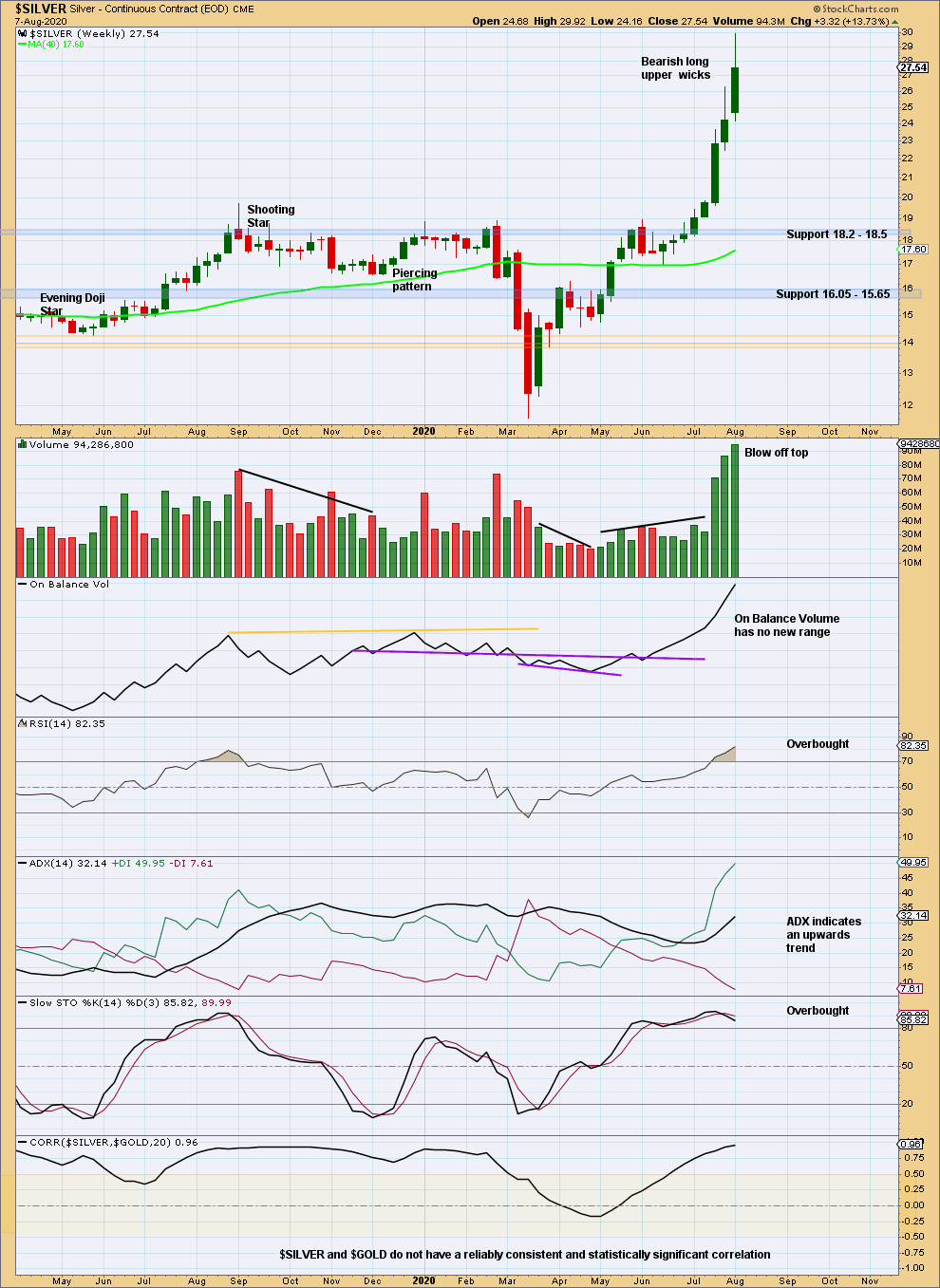
Click chart to enlarge. Chart courtesy of StockCharts.com.
Two long upper wicks with increasingly strong volume suggest a blow off top may have formed and may again be over this week. RSI is now more deeply overbought, supporting this view.
DAILY CHART
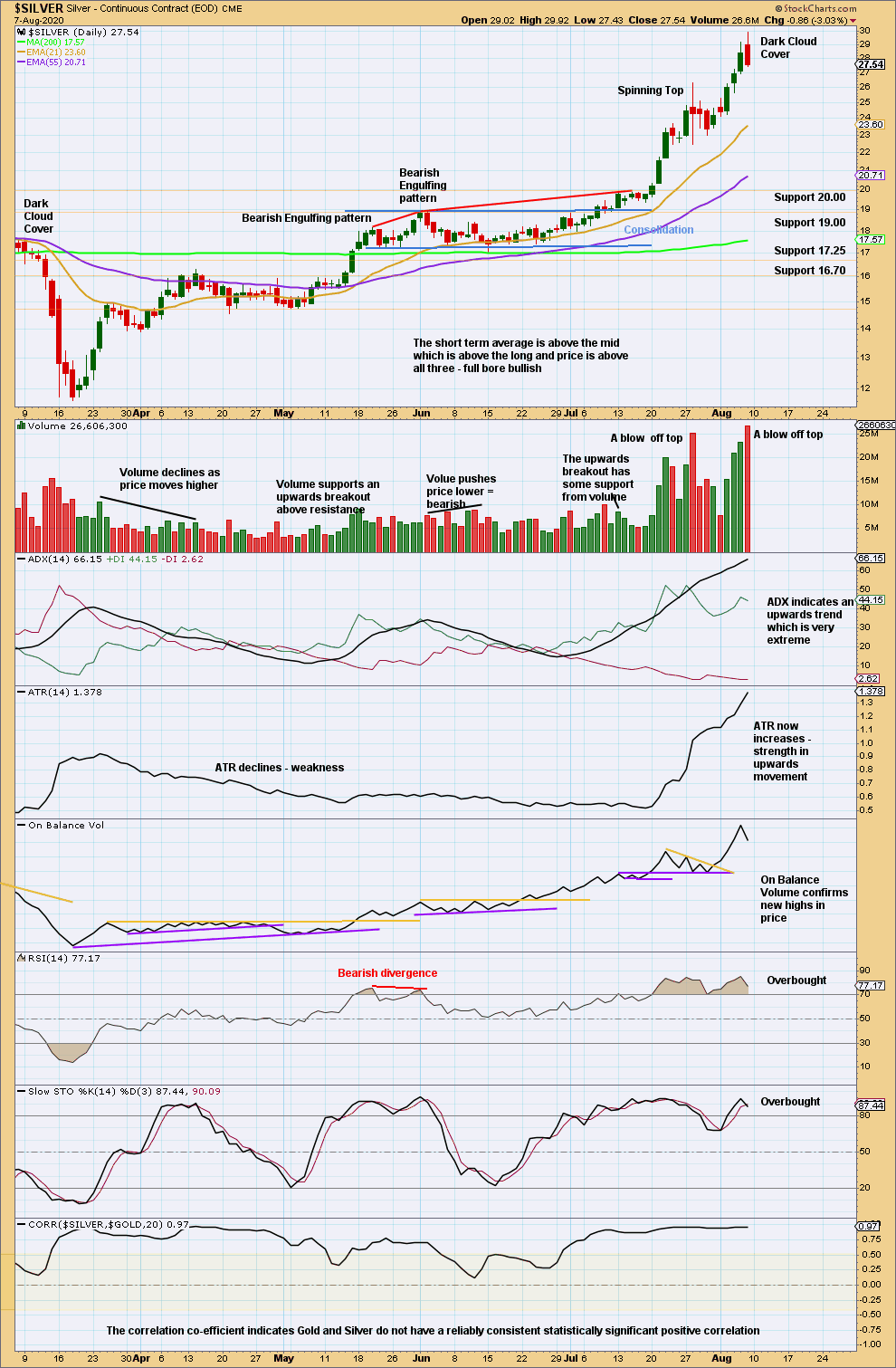
Click chart to enlarge. Chart courtesy of StockCharts.com.
A bearish candlestick reversal pattern while RSI is deeply overbought and ADX is very extreme should be given weight. Expect a trend change to either a 180° reversal or a sideways consolidation.
Published @ 02:37 p.m. ET on August 9, 2020.
—
Careful risk management protects your trading account(s).
Follow my two Golden Rules:
1. Always trade with stops.
2. Risk only 1-5% of equity on any one trade.
—
New updates to this analysis are in bold.

